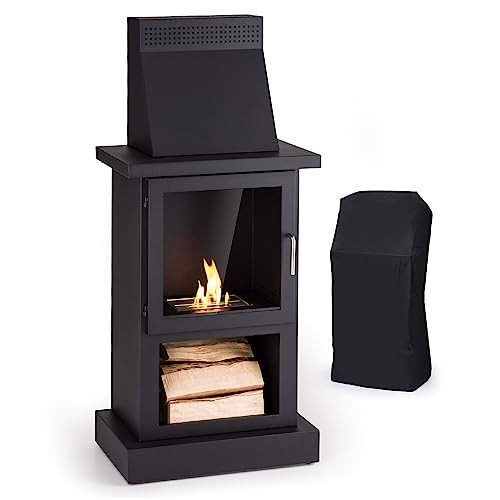20 Trailblazers Setting The Standard In Traditional Fireplaces UK
The Timeless Appeal of Traditional Fireplaces in the UK
Traditional fireplaces have actually long been integral to homes across the United Kingdom, transcending simple energy to end up being focal points of heat, comfort, and visual charm. This post explores the enduring appeal of traditional fireplaces, exploring their history, style variations, setup factors to consider, and their modern-day relevance.
Historical Significance of Fireplaces
The fireplace has actually played a main function in British homes since medieval times. Originally, they were essential for heating and cooking. Over the centuries, with the arrival of main heating and technological developments, fireplaces have actually transformed into signs of heritage and design.
Secret Historical Milestones
Date
Milestone
Description
12th Century
Intro of Chimneys
Permitted indoor fireplaces to be typical, better ventilation.
16th Century
The Renaissance influence
Fireplaces ended up being more ornamental, showing the period's styles.
18th Century
The Georgian Era
Established detailed mantels made from wood and stone.
19th Century
Victorian Era
Intro of cast-iron and tiled fireplaces.
20th Century
Decline and Modern Design
Shift towards gas and electric, with some revival of traditional styles.
Kinds Of Traditional Fireplaces
While contemporary designs focus on minimalism, traditional fireplaces often exhibit intricate craftsmanship and historic significance. Here are some popular kinds of traditional fireplaces commonly discovered in the UK:
Open Hearth Fireplaces
- Defined by a large opening and generally constructed from brick or stone.
- Provides a cozy ambiance and the sound of crackling flames.
- Requires a correct flue to reroute smoke outdoors.
Wood-Burning Stoves
- Confined systems that burn wood for heat, typically featuring a glass door.
- More efficient than open hearths, providing better heat retention.
- Offered in different styles, from rustic to contemporary.
Cast Iron Fireplaces
- Popular in the Victorian period, understood for ornate designs.
- Durable and prominent for outstanding heat conduction.
- Generally feature elaborate patterns or themes, improving visual appeal.
Tiled Fireplaces
- Often adorned with decorative tiles, these fireplaces showcase artistic style.
- Typical in the 19th century, tiles can include scenes or floral designs.
- Normally paired with wood or cast iron elements.
Marble Fireplaces
- Popular for their elegance, these fireplaces are generally personalized.
- Marble provides a luxurious finish and complements different interior styles.
- They need mindful setup due to their weight.
Table: Comparison of Traditional Fireplace Types
Fireplace Type
Heat Efficiency
Visual Appeal
Maintenance Needs
Fuel Type
Open Hearth
Low
High
High (chimney cleansing)
Wood
Wood-Burning Stove
High
Moderate
Moderate (wood supply)
Wood
Cast Iron
High
High
Low
Wood/Gas
Tiled
Moderate
Very High
Low (if non-usable)
N/A
Marble
Moderate
Really High
Moderate
N/A
Considerations for Installing a Traditional Fireplace
Setting up a traditional fireplace can improve a home's character however comes with specific considerations. Here are some points property owners should keep in mind:
Building Regulations: Always examine local building regulations and regulations. Installation may need permission, especially if structural modifications are needed.
Material Selection: Choose products that match the home's architecture and personal design. Consider usefulness along with visual appeal.
Ventilation: Ensure proper ventilation through a chimney or flue to prevent smoke and gases from collecting inside.
Security Precautions: Install carbon monoxide gas detectors and guarantee all security steps are in location, particularly if using wood-burning alternatives.
Expert Installation: Engage a qualified contractor to guarantee safe and reliable installation, complying with security standards.
Advantages of Traditional Fireplaces
Regardless of the increase of modern heating options, traditional fireplaces remain precious for a number of reasons:
Aesthetic Charm
- Adds character to any room.
- Functions as a social focal point, improving events.
Mental Comfort
- Provides warmth not just physically but mentally.
- Creates a cozy atmosphere ideal for relaxation.
Value Addition to Property
- Enhances the appeal of a home to possible buyers.
- Frequently increases residential or commercial property value due to their desirability.
Ecological Considerations
- Wood can be a renewable resource when sourced sustainably.
- Traditional fireplaces can contribute less to energy bills compared to electric systems.
Often Asked Questions (FAQs)
1. Are traditional fireplaces energy effective?
While traditional fireplaces might not be as energy-efficient as modern heating unit, improvements in style, such as the installation of glass doors, can enhance their performance. Best Fireplace -burning ranges are especially known for being more effective than open hearths.
2. How frequently should traditional fireplaces be cleaned?
Chimneys need to be examined and cleaned a minimum of once each year, especially if the fireplace is utilized routinely. This avoids creosote buildup, which can result in chimney fires.
3. Can I use a traditional fireplace for gas heating?
Yes, traditional fireplaces can frequently be transformed to use gas. This includes installing a gas line and might require a conversion package depending on the fireplace model.
4. What are the very best fuels for wood-burning fireplaces?
Experienced woods such as oak, hickory, or maple are advised for wood-burning fireplaces as they burn hotter and longer than softwoods.
5. Can traditional fireplaces be used in modern homes?
Definitely! Lots of modern designs incorporate traditional aspects, enabling an unified mix of styles. Furthermore, traditional fireplaces can add a special touch to contemporary homes.
From their historic significance to their modern-day importance, traditional fireplaces stay an ultimate feature in lots of UK homes. Their enduring popularity is not just rooted in their performance but likewise in the heat and appeal they offer. Whether one select a classic open hearth or a perfectly tiled fireplace, the choice contributes to producing an inviting environment where memories can be made. As homeowners become more mindful of aesthetics and fond memories, traditional fireplaces are poised to keep their attraction for generations to come.
